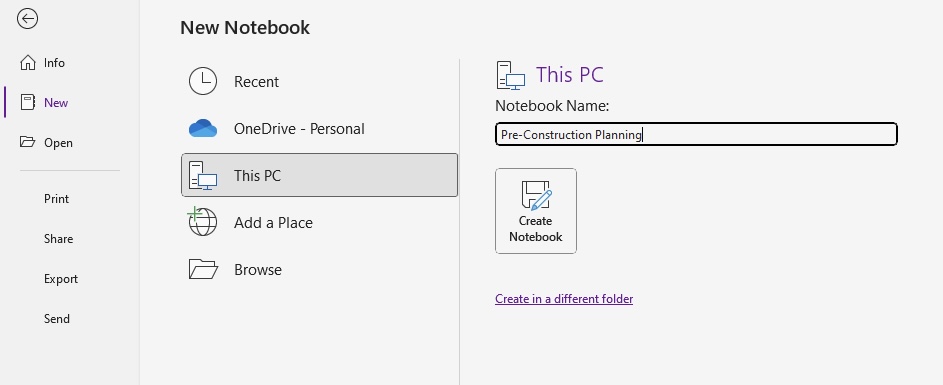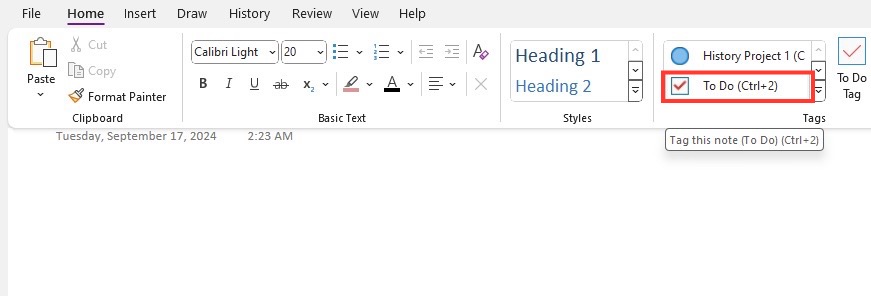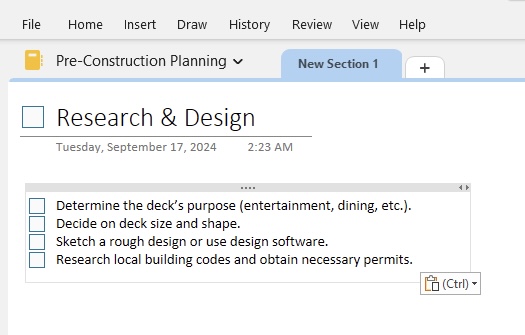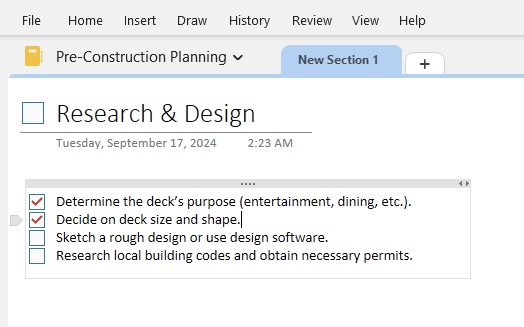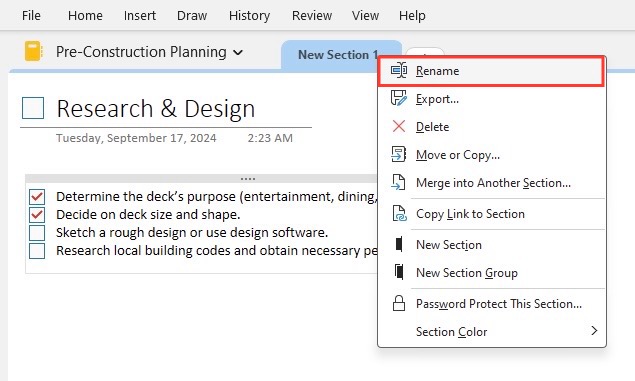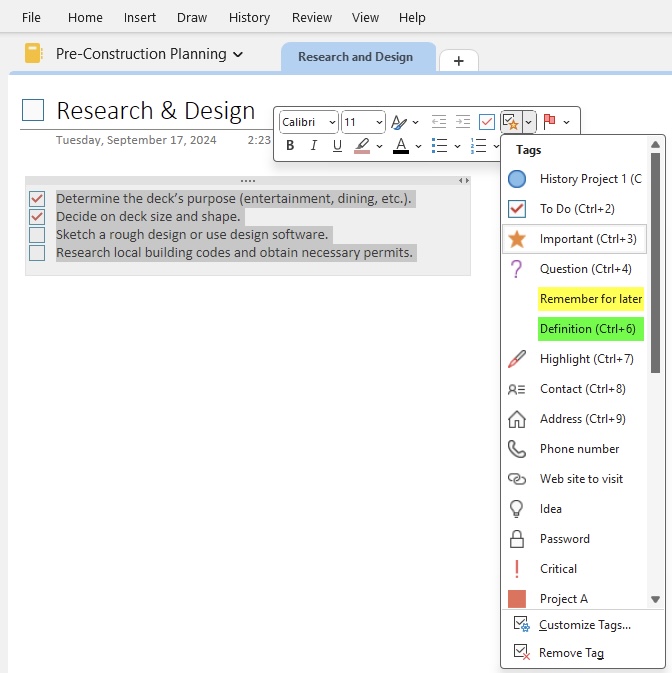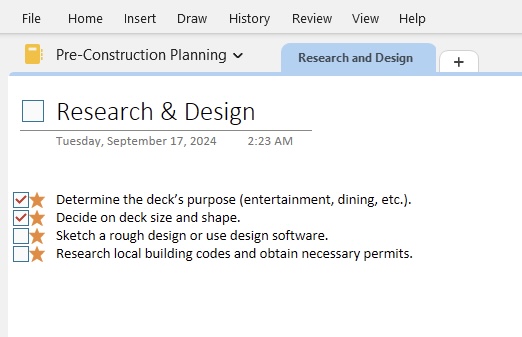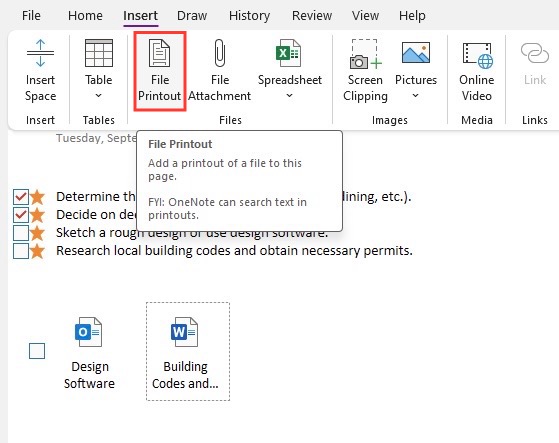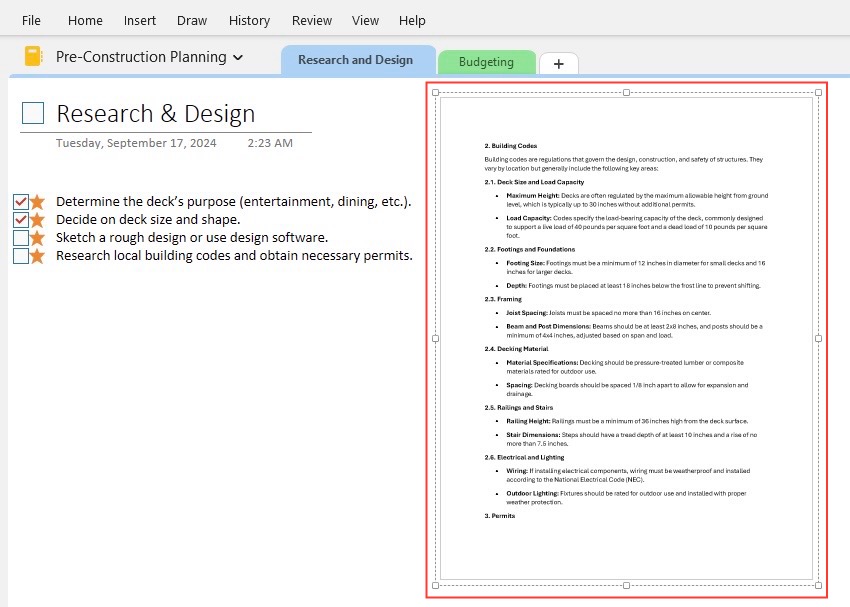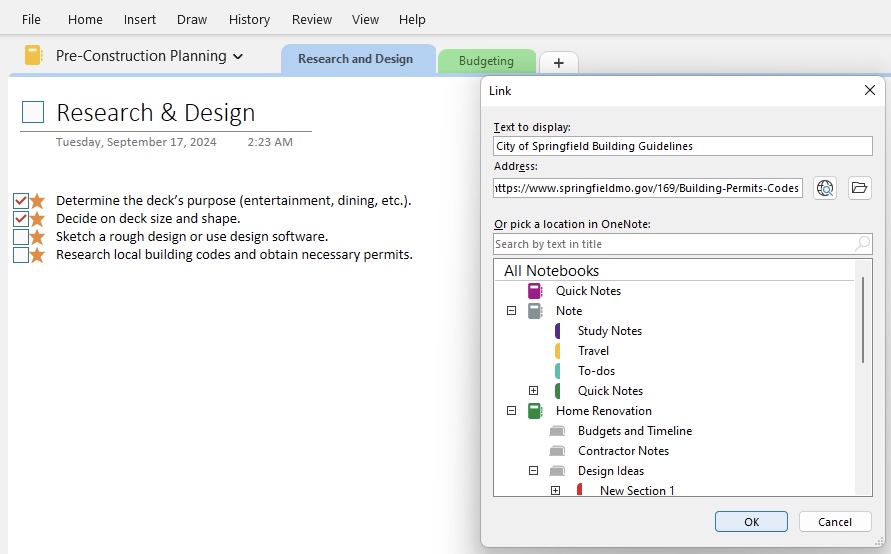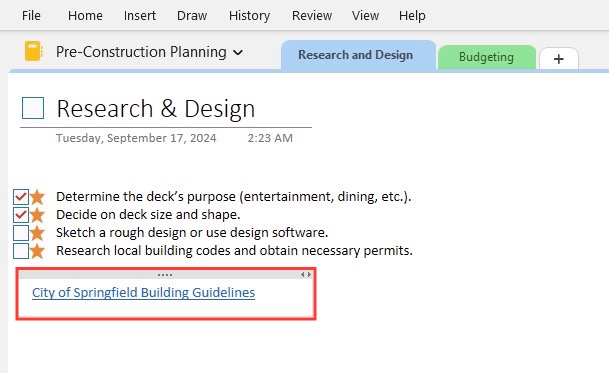As a dedicated enthusiast of productivity tools, I’ve found that an organized OneNote to-do list is the backbone of any efficient workflow. Incorporating them effectively can transform overwhelming days into structured sequences of accomplishments. In the swirl of our daily commitments, they act as a reliable anchor, ensuring that nothing slips through the cracks.
Key Takeaways
- To create a to-do list in OneNote, begin by opening a new page and selecting the Home tab, followed by clicking on the To Do Tag button to produce checkable boxes for your list items.
- Add each task by typing next to a checkbox and hit Enter to create a new checkbox for the next item; tasks can be marked as complete by clicking the box.
- Organize your tasks by right-clicking pages to rename them, such as “Grocery Shopping List” or “Wedding Preparations,” allowing for separate, manageable lists on different pages.
Overview of Onenote as a Productivity Tool
OneNote shines as a productivity powerhouse within the suite of Microsoft tools, positioned uniquely for those seeking flexibility and integration. Unlike rigid task management systems, OneNote offers a versatile canvas—whether you’re jotting down quick notes, compiling research, or tracking long-term projects. Its seamless integration with other Microsoft applications enhances its appeal, embedding into a workflow that likely already includes tools like Word, Excel, or Outlook. With OneNote’s capacity for multimedia content and its user-friendly interface, I’ve witnessed firsthand how it can cater to a variety of organizational styles.
Table of Contents
Getting Started with Onenote for Task Management
Basic Features of Onenote for Creating To-Do Lists
OneNote provides a robust set of features tailored for crafting to-do lists that cater to diverse needs and preferences. Here’s what makes it special for task management:
- To-Do Tag Button: With a simple click, you can add checkboxes beside each item, creating a checklist instantly.
- Drag-and-Drop Functionality: Tasks aren’t set in stone. You can reorder them as priorities shift.
- Sub-Tasks: By indenting items, you can create hierarchy in your list, making sub-tasks clear.
- Tags: These allow for easy categorization and retrieval of tasks, beyond just your to-do lists, enhancing searching and sorting.
Through my regular use, I’ve discovered these features don’t just make list creation intuitive; they also add layers of structure to each project’s complexities.
Setting Up Your First Onenote To-Do List
To start your journey toward an organized life with OneNote, follow these steps:
STEP 1: Create a New Note: Open OneNote and create a new note. Give it a practical title that intuitively reflects its contents.
STEP 2: Select the Home Tab: Here you’ll find the To Do Tag button, which is the starting point for your list.
STEP 3: Itemize Your Tasks: Click the To Do Tag button and begin typing your tasks. Each time you hit Enter, a new checkbox appears, ready for your next item.
STEP 4: Check Off Completed Tasks: As you complete each task, click the box to achieve that satisfying checkmark. It gives a visual progress indicator and a boost to morale.
STEP 5: Categorize and Prioritize: Right-click to rename pages within your list, helping you organize tasks by categories like ‘Urgent,’ ‘Follow-Up,’ or by project names.
With those steps, you’ll have a functioning to-do list that should start bringing clarity to your workday almost immediately.
Streamline Your Tasks with Onenote Hacks
Leveraging Tags and Checklists for Seamless Organization
Tags and checklists within OneNote serve as a fundamental duo for streamlining task management. Here’s how I leverage these features for seamless organization:
Custom Tags: I create custom tags for specific projects or task types, like ‘Urgent,’ ‘Client Request,’ or ‘Idea’. This not only helps in quick identification but also in searching tasks through the Tags Summary pane.
Checklists as Milestones: For complex tasks, I break them down into smaller, manageable steps in a checklist. Each completed checkbox feels like hitting a mini-milestone, propelling motivation and keeping progress transparent.
Strategically used, these tags and checklists render chaos into clarity, perfect for when our mental bandwidth is spread thin across multiple fronts.
Incorporating Files and Links into Your To-Do Items
Merging files and links into OneNote to-do lists elevates their functionality substantially. I often make my lists more actionable by:
Embedding File Links: Next to a task, I click Insert > File to add links or attachments, providing all necessary documentation at the task’s location. With this, I ensure context is never lost.
Inserting File Printouts: For quick reference, I sometimes choose ‘Insert as a printout’, making the contents of a document directly visible within the note.
Linking Existing Content: By Ctrl-clicking any text, I transform it into a hyperlink to other pages or notebooks. This creates an interconnected web of notes, invaluable for complex projects.
Seamlessly incorporating these elements ensures that I have all pertinent information at my fingertips, directly linked to the relevant task.
Collaborative To-Do Lists in Onenote
Sharing Your Onenote Lists for Team Collaboration
Sharing OneNote lists for team collaboration unlocks a powerful synergy in project management. The shared task lists can be both ticked off and added to by all with access, nurturing a truly collaborative environment. Here’s what I do to ensure we work together seamlessly:
- Utilize OneDrive or Teams: I share my OneNote notebook through Microsoft OneDrive or Teams, making it accessible to relevant team members.
- Set Permissions: I assign permissions thoughtfully, deciding who can view or edit the notebook, to maintain control over the document’s integrity.
This collaborative aspect extends beyond mere task lists; it’s a vessel for collective thought and creativity, essential in a landscape where joint effort is paramount.
Real-Time Synchronization Across Devices and Users
When it comes to task management in OneNote, real-time synchronization is a game-changer. I often highlight how everything I add or modify is updated instantaneously across all my devices. That means whether I check off a task on my phone or add a note on my tablet, it’s reflected everywhere.
Similarly, when working in teams, these changes occur on my colleague’s devices as well, ensuring we’re all current with the latest updates and completions. By syncing data across our many devices and users, OneNote keeps us all on the same page—literally—and helps eliminate redundancies and confusion.
Overcome Common Challenges in Onenote Task Management
Tips for Efficiently Navigating Large Onenote Notebooks
Navigating large OneNote notebooks with ease comes down to implementing systematic organization and employing a few strategic practices such as:
- Leverage the Navigation Pane: Expand or collapse to view the hierarchy of your notebooks, and use the quick launch navigation shortcuts.
- Create a Table of Contents: A dedicated page with hyperlinks to key sections and pages acts as a master index for quick access.
- Utilize the Search Function: With keywords and tags, I can locate information swiftly, bypassing manual scanning of notes.
Efficient navigation means less time searching and more time doing, a crucial element in handling extensive notebooks brimming with information.
Addressing Sync Issues and Data Management Concerns
Over time, I’ve encountered the occasional sync issue or data management concern with OneNote. To keep everything running smoothly, here’s what I recommend:
- Check Your Internet Connection: Often, sync problems are due to connectivity issues.
- Regularly Update Your App: I make sure to run the latest version of OneNote to utilize improved features and bug fixes.
- Manage Section Sizes: For data concerns, I monitor the size of notebook sections, splitting them before they become unwieldy.
By staying on top of these aspects, I minimize disruptions and ensure that my data remains orderly and retrievable.
FAQ: Mastering Your Onenote To-Do List Workflow
What Are Some Best Practices for Prioritizing Tasks in Onenote?
Best practices for prioritizing tasks in OneNote include color-coding by urgency, utilizing tags to categorize tasks, and reviewing and adjusting priorities regularly. These methods provide clarity and focus on what’s most important.
How Can I Quickly Add New Tasks to My Onenote To-Do List?
To quickly add new tasks to my OneNote to-do list, I use keyboard shortcuts: Ctrl+1 (Cmd+1 on Mac). This instantly creates a new to-do tag where I can type the task. This streamlined process keeps my momentum going and makes it less likely for tasks to slip through.
Can you add tasks to planner from OneNote?
Yes, you can add tasks to Microsoft Planner from OneNote by using Power Automate to create a flow that converts OneNote checklists into Planner tasks. This integration helps synchronize to-dos across both applications.
John Michaloudis is a former accountant and finance analyst at General Electric, a Microsoft MVP since 2020, an Amazon #1 bestselling author of 4 Microsoft Excel books and teacher of Microsoft Excel & Office over at his flagship MyExcelOnline Academy Online Course.

